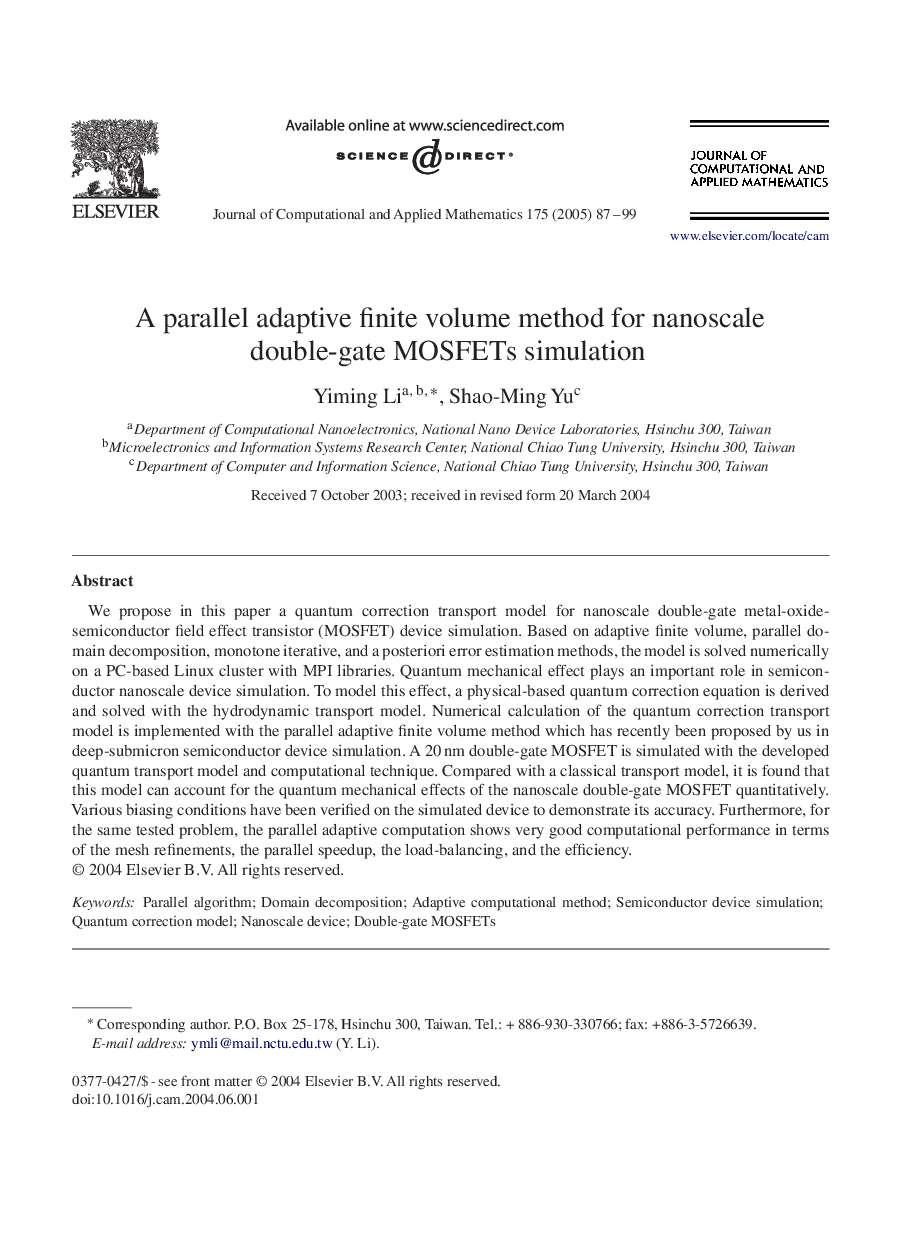| Article ID | Journal | Published Year | Pages | File Type |
|---|---|---|---|---|
| 9509845 | Journal of Computational and Applied Mathematics | 2005 | 13 Pages |
Abstract
We propose in this paper a quantum correction transport model for nanoscale double-gate metal-oxide-semiconductor field effect transistor (MOSFET) device simulation. Based on adaptive finite volume, parallel domain decomposition, monotone iterative, and a posteriori error estimation methods, the model is solved numerically on a PC-based Linux cluster with MPI libraries. Quantum mechanical effect plays an important role in semiconductor nanoscale device simulation. To model this effect, a physical-based quantum correction equation is derived and solved with the hydrodynamic transport model. Numerical calculation of the quantum correction transport model is implemented with the parallel adaptive finite volume method which has recently been proposed by us in deep-submicron semiconductor device simulation. A 20Â nm double-gate MOSFET is simulated with the developed quantum transport model and computational technique. Compared with a classical transport model, it is found that this model can account for the quantum mechanical effects of the nanoscale double-gate MOSFET quantitatively. Various biasing conditions have been verified on the simulated device to demonstrate its accuracy. Furthermore, for the same tested problem, the parallel adaptive computation shows very good computational performance in terms of the mesh refinements, the parallel speedup, the load-balancing, and the efficiency.
Keywords
Related Topics
Physical Sciences and Engineering
Mathematics
Applied Mathematics
Authors
Yiming Li, Shao-Ming Yu,
